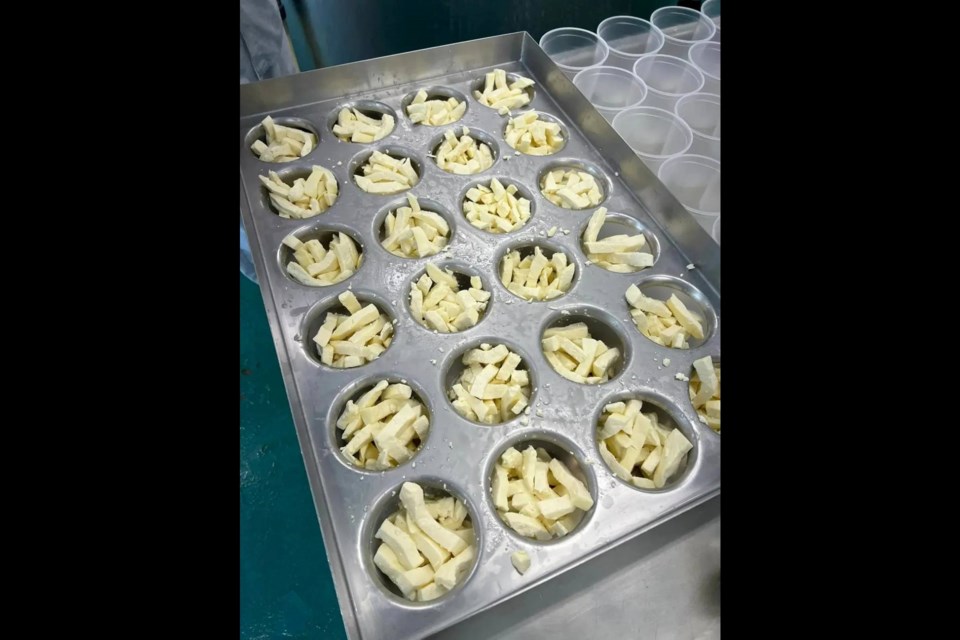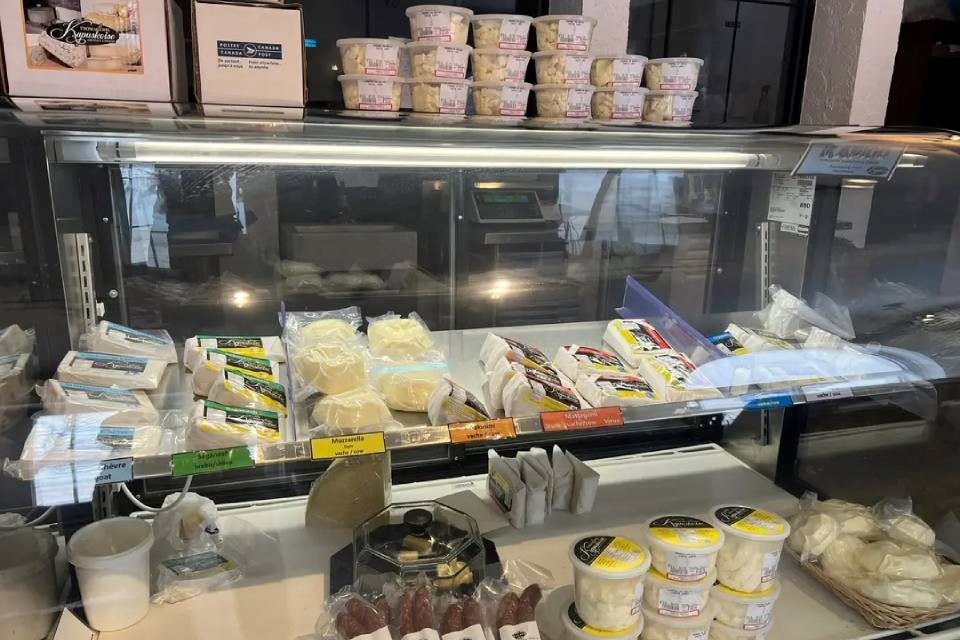According to François Nadeau, head cheesemaker and proprietor of Kapuskasing’s Fromagerie Kapuskoise cheese factory, Northern Ontario is the key ingredient of his delectable artisanal cheeses.
Quite literally, the cheese’s distinctive flavour is garnered from the unique qualities of the region from which it hails. In cheesemaking terms, these qualities are collectively called the terroir.
The North’s particular terroir is the result of its cold climate, rich soil, and pure water, which creates high-protein grasses that enhance milk production in the sheep, goats, and cows that live here.
“We wanted to keep the identity of the area within the milk itself,” Nadeau told Northern Ontario Business, shortly before receiving the morning rush of customers at the Fromagerie’s shop.
“You can have wonderful milk from elsewhere, but it will not reflect the area. I wanted to have a sense of the area. A taste of the area.”

Unlike most other cheesemakers, whose dairy comes from a myriad of different sources, Nadeau distills the North’s terroir by only using local dairy producers.
Each cheese is composed of dairy from a single farmstead, some of which exclusively produce milk for his Fromagerie. The cow dairy comes from a farmstead in Matheson, the sheep dairy from Val-Gagné, and the goat dairy from Iroquois Falls.
SEE: Dairy goat farm is the go-to source for northern artisanal cheesemaker
The dairy operations he purchases from are small, organic, and the animals are typically pasture-raised — conditions that would be much more difficult to secure at larger farms down south.
The Fromagerie’s attention to production particulars is paired with traditional French craftsmanship, such as the practice of wood-aging the wheels on shelves in the open air without a paraffin wax rind. The combination makes Fromagerie Kapuskoise one of the most unique producers in Canada.
When asked which taste of the North was his personal favourite, Nadeau had a complex answer. He typically tells customers that cheese preferences will vary from palette to palette.
“Each cheese has its own uses. Some will melt better, some will grill better, some will be better grated or broken apart.”
When pressed, he admitted to being partial to the creamy, buttery Kapuskasing, which features a visually distinctive central layer of vegetable ash. It’s a cheese, Nadeau said, that you can eat a lot more of than hard, dry cheeses, making it the most approachable of his stock.
The Fromagerie’s website recommends it as the best melting cheese, excellent in grilled cheese sandwiches and fondus, especially when blended with the tangy goat Mattagami and rich sheep Saganash.
The Kapuskasing or the earthy Opasatika varieties are also recommended for raclette — the delicious practice of melting and scraping cheese from a brick or wheel onto a spread of potatoes, dried meats, vegetables, and sliced baguette.
Nadeau initially made the Kapuskasing with the hopes of persuading his wife and co-owner of the Fromagerie, Liu Wenjing, to relocate to the North and marry him.
“My wife also chooses Kapuskasing as her favourite,” said Nadeau. “So it’s a good sign I did it properly.”
SEE: Cheese lovers flocking to Kap for artisanal fare
The couple met while Nadeau was attending a year-long cheesemaking course at the prestigious Ecole Nationale des Industries du Lait et des Viandes in the French Alps town Roche-sur-Foron.
Liu had travelled from China to learn French and also to learn at the school, which has nearly a century-long history of teaching the art of French cheesemaking.
Nadeau’s studies in France came on the heels of taking a brief cheesemaking course in St. Hyacinthe, Que., in 2013.
But his original impetus towards the craft came in 2011, during a post-university backpacking trip where he travelled between Europe and countries like China and Vietnam. He was unable to purchase cheese on a backpacker’s budget, and greatly missed the staple.
He returned home with the idea that he would start making his own cheese, planning a small artisanal operation that would be inexpensive and easy to get started on his own.
But as production demands, including the difficulties of managing loans and government permits, rose along with costs, the operation expanded.

Nadeau purchased and renovated a house in downtown Kapuskasing to create the Fromagerie. The business grew to incorporate his wife and brother, as well as his parents, and a part-time employee.
He began handing out samples of his first batch on Canada Day, July 1, 2015, and shortly afterwards began to sell cheese curds.
Today, the Fromagerie produces around 17,000 to 18,000 kilograms of cow cheese per year, about 2,000 kilograms of goat cheese, and about 1,750 kilograms of sheep cheese. They have 10 different varieties of hard, soft, and semi-soft cheeses available — enough to make an entire cheese board.
The cheese can be purchased at the factory store, and is available at numerous retailers in northeastern Ontario and down south. Orders placed on the website can be shipped anywhere in Canada.
For Nadeau, the terroir is not only an important part of the taste of each cheese, it’s also an integral part of the identity and branding of his products.
Each cheese variety is named after the Indigenous names of the region’s lakes and rivers, chosen because they are unique to the area.
“It’s a way to recognize different communities,” said Nadeau. “And it also starts conversations about the area. Every name has its own meaning, and it’s pleasant to be able to inform people from elsewhere about the geography of the area.”

The Fromagerie’s cheeses have represented their namesakes very well at prestigious venues such as last year’s Royal Agricultural Winter Fair, where they won a number of top-10 spots, and the fresh Chèvre was named best in Canada in the Fresh, Unripened Cheese – Natural category.
In early May, Fromagerie Kapuskoise attended the 2025 International Cheese Competition in Toronto, where the Saganash won first in the hard cheese category, and the Halloumi won first in the Grilling Cheese, Middle Eastern Style category.
Having the accolades on display next to samples at events down south helps with expanding their customer base and increasing visibility to the public and retailers, said Nadeau.
“It does put our name out there. People are more likely to think it will be good … and the locals feel their taste is validated.”
Nadeau is already thinking ahead to the Royal this year, having started the cheeses that need to be produced six months in advance of the Fair’s November start date.
The Fromagerie is also producing a celebratory batch of new experimental cheeses in honour of its 10-year anniversary, which it will commemorate with a not-to-be-missed local promotional event later this summer.




